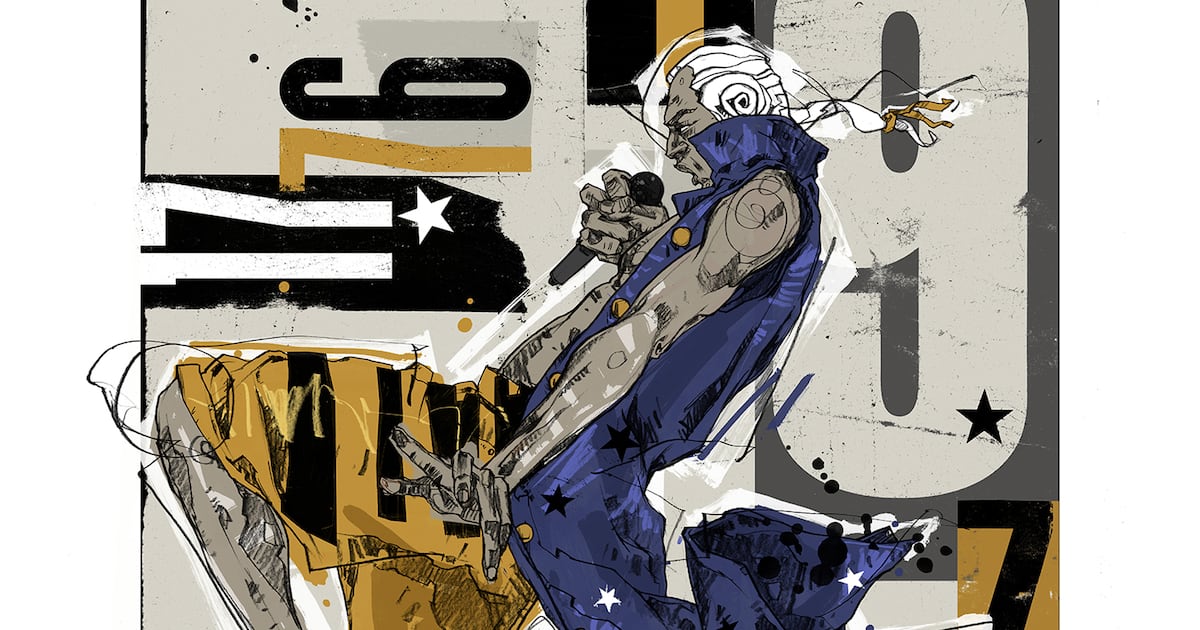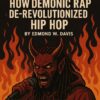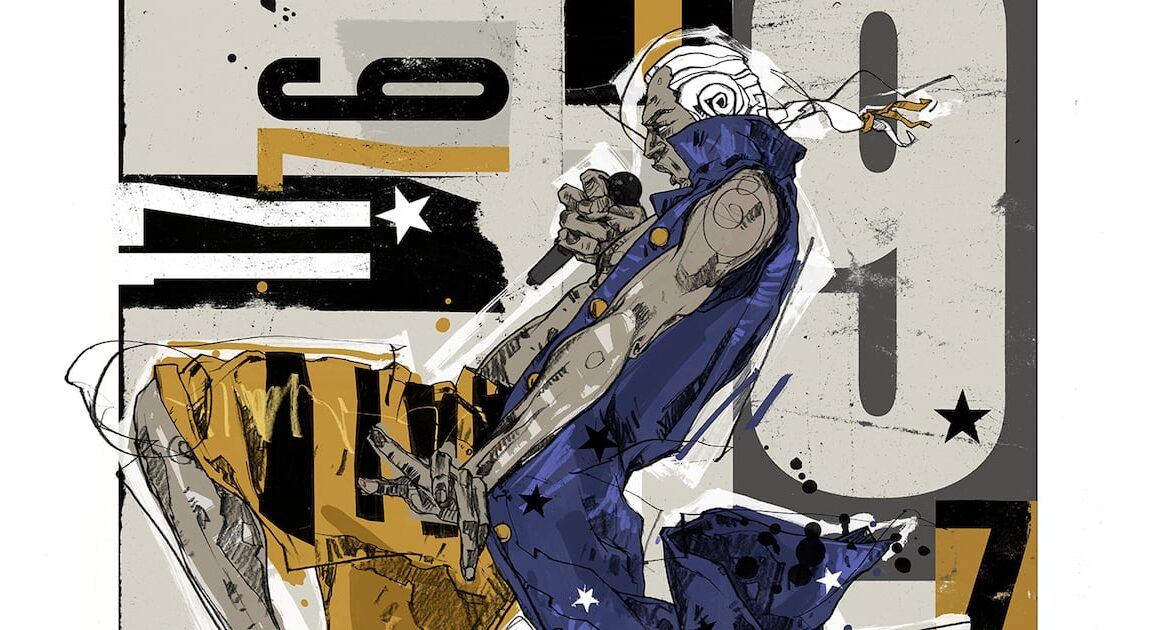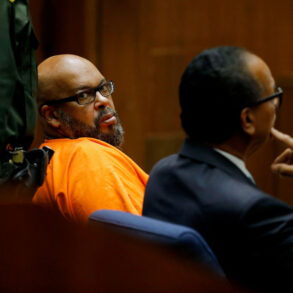
There’s something grand about a live performance at the theater, even if it’s also a history lesson. A teenage girl regales her family about character growth and the complexity of this musical’s lyrics. We’re kindred spirits. I’ve been in the Eccles Theater in downtown Salt Lake City for an hour, watching people arrive, some dressed to the nines, when a voice on the loudspeaker finally calls us to our seats.
In reality, I’ve been waiting almost a decade, since I first heard the beats and rhymes of “Hamilton: An American Musical” on a friend’s car stereo. As a teenager, I felt lost. I’d given up on my father’s America and was plotting an escape to Spain, my mother’s home country. As an immigrant’s son, I’d grown up feeling alone and out of place (at their separate houses), but this soundtrack spoke to me. The flawed but idealistic hero from humble origins was a historic figure I could relate to. Clearly, I was not alone.
The packed theater makes me feel small as I watch the stage from the second of four stacked tiers. The lights go out, the audience falls silent. Long piano notes resonate over a spare beat as a series of cast members in Colonial garb recount the destitute Caribbean childhood of one of the Founding Fathers. Nearby, a woman gesticulates in time, quietly echoing each line. “Inside, he was longing for something to be a part of,” one narrates, in rhythm. “The brother was ready to beg, steal, borrow or barter.”
When “Hamilton” first premiered off-Broadway in 2015, starring its creator Lin-Manuel Miranda, it was an instant sensation. It quickly moved to Broadway, raking in awards for adapting what could have been a stodgy biography to the musical stage. And it never stopped, with successful runs in Chicago, London, Hamburg and Puerto Rico, and tours across Australia and North America. What is it about this story that appeals to so many people from such different backgrounds? When I found out it was coming to my hometown, I knew I had to see for myself.
Staccato cello strains fill the theater as a man raps on stage. “Get your education, don’t forget from whence you came / and the world is gonna know your name,” he cries. “What’s your name, man?” The target of his question struts to the middle of the stage, his hair in a short ponytail: “My name is Alexander Hamilton,” he replies. The crowd erupts, cheers smothering his next lines. “And there’s a million things I haven’t done / But just you wait.”
Born into poverty, Alexander Hamilton used words to elevate himself, then died violently because of those words. “That’s a classic hip-hop story.”
America’s first Treasury secretary was an unlikely subject for Broadway. Hamilton was an architect of the economy, founder of the first national bank and co-author of the Federalist Papers, which persuaded readers to support the Constitution. His climb from obscurity is a classic story, but Miranda appealed to modern audiences by eliding historicity, building a cast as diverse as the country is today, and embracing a musical genre that arose from Black struggle.
Hip-hop was born nine miles from Broadway in 1973, at a house party in the Bronx hosted by a Jamaican American DJ called Kool Herc. There was something resourceful in his use of twin turntables to sample “breakbeats” — brief percussive instrumentals between verses — from R&B or funk records, “scratching” and playing them like his own instrument. Guitars and drum kits were out of reach, but soon DJs were playing events across the city. Herc tapped into an emerging aesthetic, an optimistic resilience, as Black creators came of age with unprecedented freedoms and familiar economic troubles. And maybe he amplified it.
Hip-hop culture boomed. “B-boys” invented an athletic dance form called “breaking,” which later became an Olympic event. Street artists used abandoned buildings as their canvas, presaging the murals we see today. Underground designers crafted their own fashions from existing shirts or sweatpants in early iterations of streetwear. And “emcees” rapped over the beats, developing a rhythmic style of spoken word from “rap battles” — where competitors would exchange insults couched in artful rhymes and wordplay — infusing them with elements of street poetry, brash self-confidence and defiance of the mainstream that it would later overtake.
By the 1980s, hip-hop became a fixture on the Top 40, but some rappers explored the genre as a form of literature or citizen journalism. In 1982′s “The Message,” Grandmaster Flash and the Furious Five describe inner-city poverty in brutal detail. “A child is born with no state of mind / Blind to the ways of mankind/ God is smilin’ on you but he’s frownin’ too / Because only God knows what you’ll go through.” That song is cited as a source in the “Hamilton” playbill. Over time, many rappers earned controversial reputations with R-rated lyrics and scandalous behavior, but some also told honest stories of their people in a way nobody else could.
That’s what appealed to me as a teenager, growing up as far from the Bronx as you could get. I lived in a safe neighborhood in a quiet city. I loved to read and write. But when we moved here from Spain, kids made fun of me for messing up words in English. Teachers told my parents I needed to “fix” my accent. By high school, I made being an outsider my identity. I refused to get a driver’s license, preferring to walk like they do in Europe. I challenged my classmates’ political ideas, smug at their small horizons. And I longed to get out. America wasn’t a dream to me. It felt distant and inaccessible.
Hip-hop became my soundtrack. Sometimes it offered a choir for my anger, but Kanye West taught me to believe in myself. Brother Ali spoke truth to power. K’naan, a Somali émigré who lives in Canada, showed me how to find joy in adversity. And Tupac Shakur gave me hope, with that iconic bandana tied around his shaved head. His baritone echoes as if it came from a pulpit: “There’s no need for you to fear me / If you take your time to hear me, maybe you can learn to cheer me / It ain’t about black or white, ‘cause we human.”
What I didn’t understand then was that hip-hop couldn’t be more American.
The show appeals to modern audiences by eliding historicity, starring a cast as diverse as the country is today, and embracing a musical genre that arose from Black struggle.
Traffic lights slide past the window. I’m in the passenger seat of a friend’s sedan packed with college students my age, though I’ve got no plans to join them at the university. The driver cues up an album. The hip-hop vibe pulls me in and the vocalist intrigues me. The theater kids in the back harmonize as he raps, “Hey yo, I’m just like my country / I’m young, scrappy, and hungry / And I’m not throwing away my shot.” At home that night, I devour the entire soundtrack. The story piqued my curiosity..
Soon, I started reading “Alexander Hamilton,” by Ron Chernow, and learned about the man behind the musical. Born in the Caribbean, Hamilton was left destitute as a child when his father abandoned him and his mother died from yellow fever. Like me, he loved to read and write. He showed so much talent as an adolescent clerk that his guardian and boss sent him to the North American colonies for an education, funded by donations from the community. He eventually moved to New York and enrolled at King’s College — now Columbia University — where he became embroiled in literary and revolutionary fervor. He made a name for himself as an officer in the war. He served as George Washington’s aide-de-camp and later joined his cabinet, after helping to get the Constitution made law. He did it all with wit, bravado and conviction.
The men who built this country had always seemed more like symbols than human beings to me. Now I was becoming obsessed, reading about them and their ideas. I learned that Thomas Jefferson was an ardent defender of democracy. The writings of John Adams changed how I viewed education. And Thomas Paine echoed what I’d heard in the musical: “The strength and powers of despotism consist wholly in the fears of resisting it.” Together, they showed me that hope and idealism can overcome, that we can change the world around us and build a place for ourselves, no matter where we are.
That was a heritage I could be proud of, but it was Hamilton the man who inspired me most, less by what he did than how he did it. He made himself a part of the conversation, against all odds, determined to stand up for what he believed no matter the cost. My heart would race with the drum line every time I replayed the soundtrack and heard him pleading with his friend Aaron Burr to defend the Constitution: “For once in your life, take a stand with pride / I don’t understand how you stand to the side.”
Of course, those last two lines drip with disdain, true to the man’s propensity to pick fights with anyone, including fellow American officers, in defense of his vision for the new country. That was always going to be a problem. His story felt destined for tragedy.
The men who built this country had always seemed more like symbols than human beings. Now I was becoming obsessed, reading about them and their ideas
Tupac, as Shakur is known to fans, also came from a tough upbringing. But on a Saturday night in 1996, he was on top of the world, riding through Las Vegas in a friend’s black BMW, with two chart-topping albums to his name. Some critics said he’d strayed from the social consciousness of his early work, becoming the face of “thug life” amid a gang-tinged rivalry between West and East Coast hip-hop artists. Still, he leaned to the window to chat with passing fans until a white Cadillac pulled up alongside. Gunshots rang out. He died from his wounds six days later.
No wonder “Hamilton” felt so familiar. I was a child back then, but any serious hip-hop fan knows about the conflict that got Tupac killed — including the musical’s director, Tommy Kail. “In Alexander Hamilton, you have someone born into very difficult circumstances — profound poverty, no parents, no support — who used words to elevate himself out of those circumstances, and then died violently because of those words,” he told The Sydney Morning Herald. “That’s a classic hip-hop story.”
Miranda, too, had a hip-hop life. Born to Puerto Rican parents in 1980, he grew up in Inwood, a predominantly Dominican neighborhood at the northern tip of Manhattan. As a boy, he was bullied for reading books. He tells the story in “Wrote My Way Out,” adapted from the musical in 2016: “Oversensitive, defenseless, I made sense of it by penciling.” No wonder he identified with Hamilton. Both broke through as tenacious and successful writers. Later, as an established artist, Miranda worked for years crafting a collection of songs he called “The Hamilton Mixtape,” for love of the art, before the musical.
I found mself identifying with both author and character, but I was missing some tenacity. So I got to work. I went back to school. I canvassed for political campaigns and ranted to friends on the importance of voting. I traveled to Washington, D.C., to join a peaceful protest outside the Capitol, calling for the protection of democratic principles. I spent a morning at the Lincoln Memorial, toured the museums on the National Mall, and found a spot near the Treasury building where I could stand on my toes, crane my neck and catch a glimpse of Hamilton’s statue through the cold metal bars of the surrounding fence. It isn’t always easy to break in, but as I write this, I’m finally on track to graduate in history. Thanks, in part, to a play.
But I don’t need a degree to appreciate how Miranda recasts an ordinary cabinet meeting as a rap battle near the musical’s dramatic peak. Over a steady bassline, Hamilton doesn’t just argue for his plan to rethink the federal government, he snipes at his opponent. “If we assume the debts, the union gets / A new line of credit, a financial diuretic / How do you not get it?” The various secretaries respond with “oohs,” as they do again when Jefferson strikes a sharp riposte. The scene is electric, and foreshadows Hamilton’s most infamous “beef.”
In hip-hop, a beef is a grudge or rivalry between groups or individuals. Sometimes it plays out in “diss tracks,” songs that take the shape of long-distance rap battles. Last summer, for example, LA’s Kendrick Lamar KO’d Toronto’s Drake after the two exchanged vicious jabs in a series of singles recorded in response to each other. But sometimes, the fight gets real. Nobody knew who shot Shakur until 2023, when police said a former informant had killed him for money. Stories like these cast the genre as a salacious underworld, but after all, artists are as human as anyone else.
As “Hamilton” shows us, so were the Founders.
Hushed sniffles fill the dark. Hamilton’s habit of arguing and obstinately standing on principle has left him isolated and vulnerable. Across the stage, his old friend Aaron Burr raises a dueling pistol and fires. The crack rips through the theater. The music falls silent, the lights dim, and time freezes as Hamilton delivers a final soliloquy: “America, you great unfinished symphony, you sent for me / You let me make a difference, a place where even orphan immigrants / Can leave their fingerprints and rise up.”
I find myself tearing up as we give a standing ovation. The show hits different in person, but still reminds me that there is a place for me here. Or rather, a duty: to work on my country, to make it better for those who come after, like Hamilton and all the others did before me. And when somebody feels like they don’t belong, I can help them to understand that they do. Because America isn’t so much a place as a project, and we all have to work on it together.
Outside, as people wait for rides or say goodnight and head their separate ways, I walk past a Spanish restaurant where I ate tapas for dinner. I can still taste the garlic on my lips. It was delicious, and felt like home, but so do these streets.
This story appears in the November 2024 issue of Deseret Magazine. Learn more about how to subscribe.
This post was originally published on this site be sure to check out more of their content.







